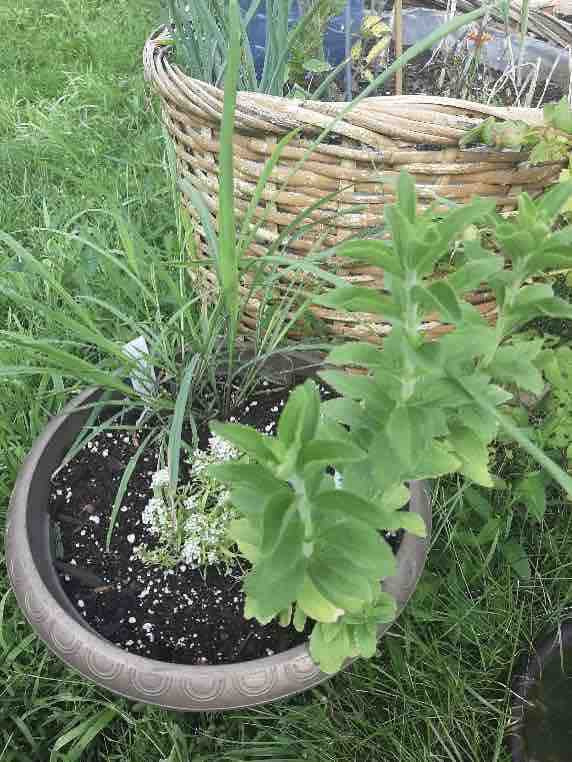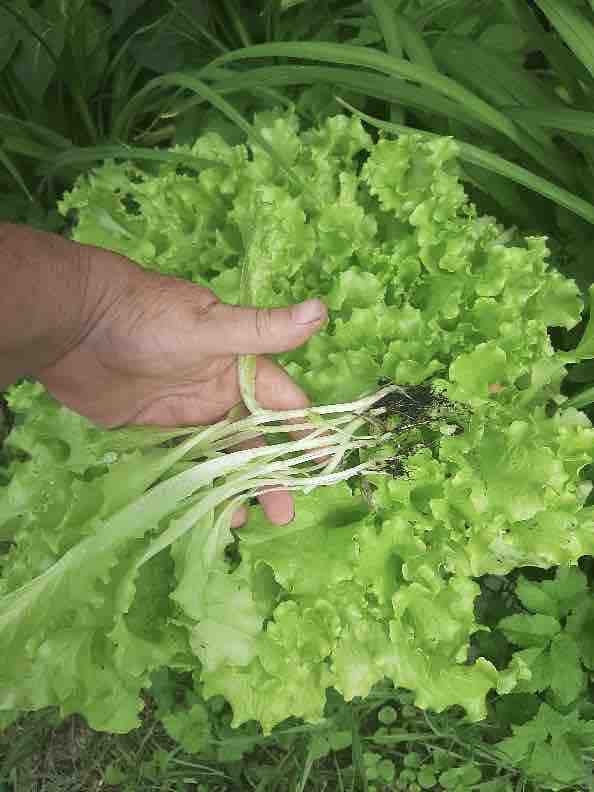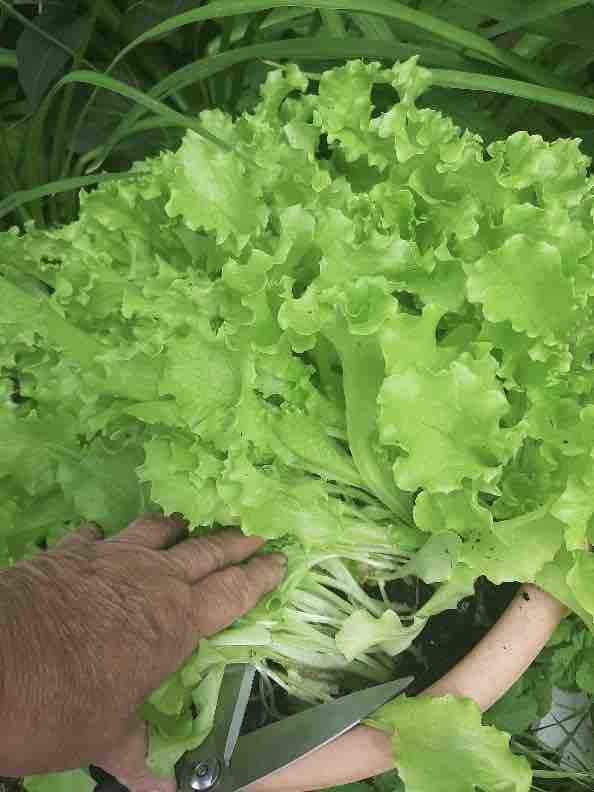Your cart is currently empty!
Growing Eastern Redbud Trees from Seed
Follow our journey of growing Eastern Redbud trees from seed, documenting every step along the way for a successful outcome. Bookmark for updates!
Your cart is currently empty!
I find the best way to harvest lettuce is to cut it as needed. The lettuce will continue to grow and can be cut at least two more times.
Greetings fellow gardeners,
Summer continues the rollercoaster ride of weather. I needed to buy some plants for one of my clients, so I had the joyous job of visiting a local nursery. This time of year, nurseries are preparing for the push for fall colour. Many of the herbs were on sale and gave me the opportunity to replace and refresh some of my herb planters.
If you have not been trimming your basil and it has started to go to seed, now is a good time to pick up a few new basil plants. Basil that starts to go to seed becomes tough and bitter, not what you want for your pesto. With all the herbs being on sale, I picked up a few extras for myself. Herbs can fill in your vegetable garden very nicely.
Lemongrass (Cymbopogon citratus) is an herb that I quite enjoy and always forget about until I find it later in the summer. It is a very tender perennial that I treat as an annual. The scent is amazing! Such a clear lemon scent. This herb makes a lovely tea or can be used in cooking, in soups and with fish. I also picked up a stevia plant. Stevia is a great sugar substitute; I use it every morning in my coffee. If you take a tiny nibble on a stevia leaf you will be amazed at the sweetness. It can be dried and stored for the winter.
If the swallowtail butterfly caterpillar found your dill, you can easily add a few more plants in preparation for pickle season. Dill is a wonderful herb in your vegetable garden. As I mentioned it is a preferred plant for the swallowtail butterfly caterpillar, and it is very tasty in summer dishes. Dill will readily self-seed in your garden so you can enjoy it every year.

The tomatoes are slowly turning colour, as are the peppers. They are worth the long wait. The brussels sprouts have been eaten by cabbage worms. No matter how often I pick off the worms, and feed them to the chickens, more worms arrive to take their place. It is doubtful that my brussels sprouts will recover from this assault. I have learned from this that I will need to use floating row covers on them next year. So disappointing.
My pot of lettuce is doing really well, and the spiky mat has prevented the squirrels from digging it up. There are two ways to pick lettuce. You can pull the entire plant out as you need it.

I find the best way to harvest lettuce is to cut it as needed. The lettuce will continue to grow and can be cut at least two more times. If you are using a heritage lettuce, let one of your plants go to seed so that you can collect seed for next year.

While I will get a few salads out of this lettuce, now is the time for me to plant another pot. I like to plant lettuce in succession so that I get fresh greens right up to the frost.
Now is the time to take stock of your vegetable garden. Do you need more plants or seeds? Are there places where fresh herbs would be helpful? Perhaps a visit to your local nursery is in order. Enjoy your week. Judith.
Follow our journey of growing Eastern Redbud trees from seed, documenting every step along the way for a successful outcome. Bookmark for updates!
Discover the vibrant bloom of blue vervain & explore its traditional uses, habitats, and cultivation methods! Learn about this hardy perennial plant native to North America & its many alternate names, such as Simpler's Joy & Swamp Verben.
The impressive Asiatic Lily is relatively easy to grow. Here are tips to be successful in producing and maintaining gorgeous blooms.
We discuss how to choose the right plants for your butterfly garden and establish smart practices to provide a safe haven for butterflies.
Backyards are meant to be a relaxing haven, a place for the entire family to enjoy. Picture an oasis, where you can let the stresses of life drift by. If your backyard doesn’t fit this picture, you can make some simple improvements. You will be astounded by the ease of a transformation.
I will be reviewing my sketches and notes, making changes planning my garden layout and building up my annual wish list of seeds.
GardeningCalendar.ca gets some funding from advertisers. If you click on links and advertisements at no cost to you, the site may receive a small commission that helps fund its operation.
© 2025 J&S Calendars Ltd.
Leave a Reply
You must be logged in to post a comment.